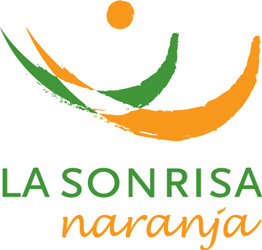Hi! I’m Rineke and I am very lucky to do my elective internship for Pharmacy at La Sonrisa Naranja. My apologies for the Dutchies who prefer to read in Dutch: I’ve decided I wanted more than just the Dutch-speaking friends to learn and appreciate what this foundation does and what is so interesting about it from a pharmacist’s perspective.
So first of all, how did a soon-to-be pharmacist end up here at La Sonrisa Naranja? Well, I was so fortunate to have a friend (Nina, forever grateful!) who knew Els from the time she did research for her master in Anthropology in Ecuador. When I asked her – and I thought this was going to be a long shot – if she knew anyone in the medical field in South America, she immediately had to think about Els. Although Els is a medical doctor, she is still allowed to supervise a pharmacy student as long as the daily topics I deal with are medication-related. And believe me, they are!
I just finished my first two weeks, which were used to observe the general routine of the medical centre. In many ways, it is a medical clinic as in any other country. There are a waiting area and a desk where Kevin, the nurse of the centre, will help visitors with a ticket for the consultation, echo, laboratory test or medication that they want. At the moment, there are consultations possible with a general practitioner, gynecologist, dentist, and recently a nutritionist from a university in Guayaquil who is doing her internship here as well. Besides consultation rooms, there is a small laboratory where most of the usual blood, urine and feces tests can be done by biochemist Gabriel. Here in Latin America, biochemists have had (almost) the same education as pharmacists. According to Gabriel, it just depends on where your interest lies in where you end up and specialise in. For example, he met his wife during his study and she ended up as a hospital pharmacist who mostly handles interactions between medication and other medication or food. Lastly, there is the small pharmacy of the medical centre. Although it is small, it still has more than 200 different drugs in stock. Mostly antibiotics, anti-parasite medication, and painkillers. That’s a big difference with pharmacies I know, where you will see a lot more medication for chronic diseases such as cardiovascular diseases or diabetes. That doesn’t mean that these people don’t have diabetes or high blood pressure. They do. They either don’t know or don’t have the money to take daily medication for it. The ones who Wikipedia everything will now say ‘Rineke, isn’t healthcare free in Ecuador?’ Well, yes and no, the public institutions are and there are healthcare insurances for those with jobs that are registered (so yes office workers, not street salesmen). The problem is that pressure on those systems is high and they often don’t have the resources to provide the care that these people need at the right time. That’s why they come to La Sonrisa Naranja, where they have to pay just a few dollars to be seen immediately.
Moreover, these patients all love to visit Els, who knows exactly how to provide the care they want, but with the rationale that she learned in the Netherlands. For example, patients here are very eager to get medication prescribed. No prescription equals bad care and most probably a visit to another doctor. Thus, instead of explaining to the Dutch patient that the virus infection cannot be treated with antibiotics and sending them home with nothing, the Ecuadorian will be explained the same but goes home with vitamin C, paracetamol and/or probacteria. Second difference: because the consultation is still expensive for many of the people in this neighborhood, they will first try out medication from the pharmacy. Sadly, most private pharmacies will not have a pharmacist or even medical schooled person working. So, Els always asks what medication they already tried and without blinking they say they tried a few tablets of random antibiotics or even worse, dangerous drugs for their babies. Did you know that some people here even put amoxicillin on their wounds?
From the moment these patients say what medication they already tried, I look it up while Els does the physical examination part of the consultation. These patients love to be examined, even if Els already knows the diagnosis. Afterward, during the explanation phase, I can sometimes help Els with deciding on the medication, doses or intake advice. Sometimes she learns from me, and a lot of times I learn from the way she explains everything to her patients. I completely understand why patients come specifically for Els.
In the next weeks, I will focus more on the provision of information for specific medication. What to take on an empty stomach and what not. What medication is better not given to children, pregnant ladies or during breastfeeding. Hopefully, little icons for dangers or warnings like those listed will improve the way these patients handle their medication. Let’s hope those first steps will have some impact!




